Studies on the PII-PipX-NtcA Regulatory Axis of Cyanobacteria Provide Novel Insights into the Advantages and Limitations of Two-Hybrid Systems for Protein Interactions
Abstract
1. Introduction
2. Results and Discussion
2.1. Interactions Involving PipX-PII and PipX-NtcA
2.2. PipX Interacts with E. coli GlnB and GlnK Proteins in the BACTH System
2.3. Self- and Cross-Interactions Involving PII, GlnB and GlnK Proteins, and the Differences between Two-Hybrid Systems
2.4. PII Gives Weaker Interaction Signals than GlnB and GlnK Proteins in the BACTH System
2.5. Mutations Impairing PipX Self-Interactions Also Impair Binding to GlnK or GlnB in E. coli
2.6. Mutations Impairing PipX Binding to GlnK or GlnB in E. coli Also Impair PipX Levels in E. coli
2.7. Lessons from Two-Hybrid Assays
3. Materials and Methods
3.1. Strains, Oligonucleotides and Plasmid Construction
3.2. BACTH Assays
3.3. Protein Extraction and Immunodetection Assays
3.4. Computational Methods
4. Conclusions
Supplementary Materials
Author Contributions
Funding
Institutional Review Board Statement
Informed Consent Statement
Data Availability Statement
Acknowledgments
Conflicts of Interest
References
- Blank, C.E.; Sánchez-Baracaldo, P. Timing of Morphological and Ecological Innovations in the Cyanobacteria—A Key to Understanding the Rise in Atmospheric Oxygen. Geobiology 2010, 8, 1–23. [Google Scholar] [CrossRef]
- Forchhammer, K.; Selim, K.A. Carbon/Nitrogen Homeostasis Control in Cyanobacteria. FEMS Microbiol. Rev. 2020, 44, 33–53. [Google Scholar] [CrossRef] [PubMed]
- Zhang, C.-C.; Zhou, C.-Z.; Burnap, R.L.; Peng, L. Carbon/Nitrogen Metabolic Balance: Lessons from Cyanobacteria. Trends Plant Sci. 2018, 23, 1116–1130. [Google Scholar] [CrossRef] [PubMed]
- Flores, E.; Herrero, A. Nitrogen Assimilation and Nitrogen Control in Cyanobacteria. Biochem. Soc. Trans. 2005, 33, 164–167. [Google Scholar] [CrossRef] [PubMed]
- Muro-Pastor, M.I.; Reyes, J.C.; Florencio, F.J. Ammonium Assimilation in Cyanobacteria. Photosynth. Res. 2005, 83, 135–150. [Google Scholar] [CrossRef] [PubMed]
- Ohashi, Y.; Shi, W.; Takatani, N.; Aichi, M.; Maeda, S.; Watanabe, S.; Yoshikawa, H.; Omata, T. Regulation of Nitrate Assimilation in Cyanobacteria. J. Exp. Bot. 2011, 62, 1411–1424. [Google Scholar] [CrossRef] [PubMed]
- Huergo, L.F.; Dixon, R. The Emergence of 2-Oxoglutarate as a Master Regulator Metabolite. Microbiol. Mol. Biol. Rev. 2015, 79, 419–435. [Google Scholar] [CrossRef] [PubMed]
- Senior, P.J. Regulation of Nitrogen Metabolism in Escherichia coli and Klebsiella aerogenes: Studies with the Continuous-Culture Technique. J. Bacteriol. 1975, 123, 407–418. [Google Scholar] [CrossRef] [PubMed]
- Leigh, J.A.; Dodsworth, J.A. Nitrogen Regulation in Bacteria and Archaea. Annu. Rev. Microbiol. 2007, 61, 349–377. [Google Scholar] [CrossRef] [PubMed]
- Ninfa, A.J.; Jiang, P. PII Signal Transduction Proteins: Sensors of α-Ketoglutarate That Regulate Nitrogen Metabolism. Curr. Opin. Microbiol. 2005, 8, 168–173. [Google Scholar] [CrossRef] [PubMed]
- Forchhammer, K.; Selim, K.A.; Huergo, L.F. New Views on PII Signaling: From Nitrogen Sensing to Global Metabolic Control. Trends Microbiol. 2022, 30, 722–735. [Google Scholar] [CrossRef] [PubMed]
- Kamberov, E.S.; Atkinson, M.R.; Ninfa, A.J. The Escherichia Coli PII Signal Transduction Protein Is Activated upon Binding 2-Ketoglutarate and ATP. J. Biol. Chem. 1995, 270, 17797–17807. [Google Scholar] [CrossRef] [PubMed]
- Selim, K.A.; Ermilova, E.; Forchhammer, K. From Cyanobacteria to Archaeplastida: New Evolutionary Insights into PII Signalling in the Plant Kingdom. New Phytol. 2020, 227, 722–731. [Google Scholar] [CrossRef] [PubMed]
- Zeth, K.; Fokina, O.; Forchhammer, K. Structural Basis and Target-Specific Modulation of ADP Sensing by the Synechococcus elongatus PII Signaling Protein. J. Biol. Chem. 2014, 289, 8960–8972. [Google Scholar] [CrossRef] [PubMed]
- Fields, S.; Song, O. A Novel Genetic System to Detect Protein–Protein Interactions. Nature 1989, 340, 245–246. [Google Scholar] [CrossRef] [PubMed]
- Martínez-Argudo, I.; Martín-Nieto, J.; Salinas, P.; Maldonado, R.; Drummond, M.; Contreras, A. Two-hybrid Analysis of Domain Interactions Involving NtrB and NtrC Two-component Regulators. Mol. Microbiol. 2001, 40, 169–178. [Google Scholar] [CrossRef] [PubMed]
- Martínez-Argudo, I.; Salinas, P.; Maldonado, R.; Contreras, A. Domain Interactions on the Ntr Signal Transduction Pathway: Two-Hybrid Analysis of Mutant and Truncated Derivatives of Histidine Kinase NtrB. J. Bacteriol. 2002, 184, 200–206. [Google Scholar] [CrossRef] [PubMed]
- Salinas, P.; Contreras, A. Identification and Analysis of Escherichia Coli Proteins That Interact with the Histidine Kinase NtrB in a Yeast Two-Hybrid System. Mol. Genet. Genom. 2003, 269, 574–581. [Google Scholar] [CrossRef] [PubMed]
- Burillo, S.; Luque, I.; Fuentes, I.; Contreras, A. Interactions between the Nitrogen Signal Transduction Protein PII and N-Acetyl Glutamate Kinase in Organisms That Perform Oxygenic Photosynthesis. J. Bacteriol. 2004, 186, 3346–3354. [Google Scholar] [CrossRef] [PubMed]
- Espinosa, J.; Castells, M.A.; Laichoubi, K.B.; Forchhammer, K.; Contreras, A. Effects of Spontaneous Mutations in pipX Functions and Regulatory Complexes on the Cyanobacterium Synechococcus elongatus Strain PCC 7942. Microbiology 2010, 156, 1517–1526. [Google Scholar] [CrossRef] [PubMed][Green Version]
- Espinosa, J.; Forchhammer, K.; Burillo, S.; Contreras, A. Interaction Network in Cyanobacterial Nitrogen Regulation: PipX, a Protein That Interacts in a 2-oxoglutarate Dependent Manner with PII and NtcA. Mol. Microbiol. 2006, 61, 457–469. [Google Scholar] [CrossRef] [PubMed]
- Heinrich, A.; Maheswaran, M.; Ruppert, U.; Forchhammer, K. The Synechococcus elongatus PII Signal Transduction Protein Controls Arginine Synthesis by Complex Formation with N-acetyl-l-glutamate Kinase. Mol. Microbiol. 2004, 52, 1303–1314. [Google Scholar] [CrossRef] [PubMed]
- Laichoubi, K.B.; Espinosa, J.; Castells, M.A.; Contreras, A. Mutational Analysis of the Cyanobacterial Nitrogen Regulator PipX. PLoS ONE 2012, 7, e35845. [Google Scholar] [CrossRef]
- Laichoubi, K.B.; Beez, S.; Espinosa, J.; Forchhammer, K.; Contreras, A. The Nitrogen Interaction Network in Synechococcus WH5701, a Cyanobacterium with Two PipX and Two PII-like Proteins. Microbiology 2011, 157, 1220–1228. [Google Scholar] [CrossRef] [PubMed]
- Llácer, J.L.; Espinosa, J.; Castells, M.A.; Contreras, A.; Forchhammer, K.; Rubio, V. Structural Basis for the Regulation of NtcA-Dependent Transcription by Proteins PipX and PII. Proc. Natl. Acad. Sci. USA 2010, 107, 15397–15402. [Google Scholar] [CrossRef]
- Llácer, J.L.; Fita, I.; Rubio, V. Arginine and Nitrogen Storage. Curr. Opin. Struct. Biol. 2008, 18, 673–681. [Google Scholar] [CrossRef] [PubMed]
- Chellamuthu, V.R.; Alva, V.; Forchhammer, K. From Cyanobacteria to Plants: Conservation of PII Functions during Plastid Evolution. Planta 2013, 237, 451–462. [Google Scholar] [CrossRef]
- Labella, J.I.; Cantos, R.; Salinas, P.; Espinosa, J.; Contreras, A. Distinctive Features of PipX, a Unique Signaling Protein of Cyanobacteria. Life 2020, 10, 79. [Google Scholar] [CrossRef] [PubMed]
- Selim, K.A.; Haffner, M.; Watzer, B.; Forchhammer, K. Tuning the in Vitro Sensing and Signaling Properties of Cyanobacterial PII Protein by Mutation of Key Residues. Sci. Rep. 2019, 9, 18985. [Google Scholar] [CrossRef] [PubMed]
- Kyrpides, N.C.; Woese, C.R.; Ouzounis, C.A. KOW: A Novel Motif Linking a Bacterial Transcription Factor with Ribosomal Proteins. Trends Biochem. Sci. 1996, 21, 425–426. [Google Scholar] [CrossRef] [PubMed]
- Cantos, R.; Labella, J.I.; Espinosa, J.; Contreras, A. The Nitrogen Regulator PipX Acts in cis to Prevent Operon Polarity. Environ. Microbiol. Rep. 2019, 11, 495–507. [Google Scholar] [CrossRef] [PubMed]
- Forcada-Nadal, A.; Palomino-Schätzlein, M.; Neira, J.L.; Pineda-Lucena, A.; Rubio, V. The PipX Protein, When Not Bound to Its Targets, Has Its Signaling C-Terminal Helix in a Flexed Conformation. Biochemistry. 2017, 56, 3211–3224. [Google Scholar] [CrossRef] [PubMed]
- Domínguez-Martín, M.A.; López-Lozano, A.; Clavería-Gimeno, R.; Velázquez-Campoy, A.; Seidel, G.; Burkovski, A.; Díez, J.; García-Fernández, J.M. Differential NtcA Responsiveness to 2-Oxoglutarate Underlies the Diversity of C/N Balance Regulation in Prochlorococcus. Front. Microbiol. 2018, 8, 2641. [Google Scholar] [CrossRef] [PubMed]
- Esteves-Ferreira, A.A.; Inaba, M.; Fort, A.; Araújo, W.L.; Sulpice, R. Nitrogen Metabolism in Cyanobacteria: Metabolic and Molecular Control, Growth Consequences and Biotechnological Applications. Crit. Rev. Microbiol. 2018, 44, 541–560. [Google Scholar] [CrossRef] [PubMed]
- Herrero, A.; Muro-Pastor, A.M.; Flores, E. Nitrogen Control in Cyanobacteria. J. Bacteriol. 2001, 183, 411–425. [Google Scholar] [CrossRef] [PubMed]
- Giner-Lamia, J.; Robles-Rengel, R.; Hernández-Prieto, M.A.; Muro-Pastor, M.I.; Florencio, F.J.; Futschik, M.E. Identification of the Direct Regulon of NtcA during Early Acclimation to Nitrogen Starvation in the Cyanobacterium Synechocystis Sp. PCC 6803. Nucleic Acids Res. 2017, 45, 11800–11820. [Google Scholar] [CrossRef] [PubMed]
- Espinosa, J.; Rodríguez-Mateos, F.; Salinas, P.; Lanza, V.F.; Dixon, R.; de la Cruz, F.; Contreras, A. PipX, the Coactivator of NtcA, Is a Global Regulator in Cyanobacteria. Proc. Natl. Acad. Sci. USA 2014, 111, 201404030–201404097. [Google Scholar] [CrossRef] [PubMed]
- Espinosa, J.; Forchhammer, K.; Contreras, A. Role of the Synechococcus PCC 7942 Nitrogen Regulator Protein PipX in NtcA-Controlled Processes. Microbiology 2007, 153, 711–718. [Google Scholar] [CrossRef] [PubMed]
- Zhao, M.-X.; Jiang, Y.-L.; He, Y.-X.; Chen, Y.-F.; Teng, Y.-B.; Chen, Y.; Zhang, C.-C.; Zhou, C.-Z. Structural Basis for the Allosteric Control of the Global Transcription Factor NtcA by the Nitrogen Starvation Signal 2-Oxoglutarate. Proc. Natl. Acad. Sci. USA 2010, 107, 12487–12492. [Google Scholar] [CrossRef] [PubMed]
- Espinosa, J.; Labella, J.I.; Cantos, R.; Contreras, A. Energy Drives the Dynamic Localization of Cyanobacterial Nitrogen Regulators during Diurnal Cycles. Environ. Microbiol. 2018, 20, 1240–1252. [Google Scholar] [CrossRef] [PubMed]
- Karimova, G.; Pidoux, J.; Ullmann, A.; Ladant, D. A Bacterial Two-Hybrid System Based on a Reconstituted Signal Transduction Pathway. Proc. Natl. Acad. Sci. USA 1998, 95, 5752–5756. [Google Scholar] [CrossRef] [PubMed]
- Karimova, G.; Gauliard, E.; Davi, M.; Ouellette, S.P.; Ladant, D. Protein–Protein Interaction: Bacterial Two Hybrid. In Bacterial Protein Secretion Systems. Methods in Molecular Biology; Humana Press: New York, NY, USA, 2024; pp. 207–224. [Google Scholar]
- Corrales-Guerrero, L.; Camargo, S.; Valladares, A.; Picossi, S.; Luque, I.; Ochoa de Alda, J.A.G.; Herrero, A. FtsZ of Filamentous, Heterocyst-Forming Cyanobacteria Has a Conserved N-Terminal Peptide Required for Normal FtsZ Polymerization and Cell Division. Front. Microbiol. 2018, 9, 2260. [Google Scholar] [CrossRef] [PubMed]
- Marbouty, M.; Saguez, C.; Cassier-Chauvat, C.; Chauvat, F. ZipN, an FtsA-like Orchestrator of Divisome Assembly in the Model Cyanobacterium Synechocystis PCC6803. Mol. Microbiol. 2009, 74, 409–420. [Google Scholar] [CrossRef] [PubMed]
- Ramos-León, F.; Mariscal, V.; Frías, J.E.; Flores, E.; Herrero, A. Divisome-dependent Subcellular Localization of Cell–Cell Joining Protein SepJ in the Filamentous Cyanobacterium Anabaena. Mol. Microbiol. 2015, 96, 566–580. [Google Scholar] [CrossRef]
- Xu, X.; Rachedi, R.; Foglino, M.; Talla, E.; Latifi, A. Interaction Network among Factors Involved in Heterocyst-Patterning in Cyanobacteria. Mol. Genet. Genom. 2022, 297, 999–1015. [Google Scholar] [CrossRef] [PubMed]
- Labella, J.I.; Llop, A.; Contreras, A. The Default Cyanobacterial Linked Genome: An Interactive Platform Based on Cyanobacterial Linkage Networks to Assist Functional Genomics. FEBS Lett. 2020, 594, 1661–1674. [Google Scholar] [CrossRef]
- Jerez, C.; Salinas, P.; Llop, A.; Cantos, R.; Espinosa, J.; Labella, J.I.; Contreras, A. Regulatory Connections Between the Cyanobacterial Factor PipX and the Ribosome Assembly GTPase EngA. Front. Microbiol. 2021, 12, 781760. [Google Scholar] [CrossRef] [PubMed]
- Labella, J.I.; Obrebska, A.; Espinosa, J.; Salinas, P.; Forcada-Nadal, A.; Tremiño, L.; Rubio, V.; Contreras, A. Expanding the Cyanobacterial Nitrogen Regulatory Network: The GntR-Like Regulator PlmA Interacts with the PII-PipX Complex. Front. Microbiol. 2016, 7, 1677. [Google Scholar] [CrossRef]
- Bullock, W.O.; Fernandez, J.M.; Short, J.M. XL1-Blue: A High Efficiency Plasmid-Transforming recA Escherichia coli Strain with β-Galactosidase Selection. Biotechniques 1987, 5, 376–378. [Google Scholar]
- Guyer, M.S.; Reed, R.R.; Steitz, J.A.; Low, K.B. Identification of a Sex-Factor-Affinity Site in E. coli As Gamma Delta. Cold Spring Harb. Symp. Quant. Biol. 1981, 45, 135–140. [Google Scholar] [CrossRef] [PubMed]
- Karimova, G.; Ullmann, A.; Ladant, D. Protein-Protein Interaction between Bacillus stearothermophilus Tyrosyl-TRNA Synthetase Subdomains Revealed by a Bacterial Two-Hybrid System. J. Mol. Microbiol. Biotechnol. 2001, 3, 73–82. [Google Scholar] [PubMed]
- Labella, J.I.; Cantos, R.; Espinosa, J.; Forcada-Nadal, A.; Rubio, V.; Contreras, A. PipY, a Member of the Conserved COG0325 Family of PLP-Binding Proteins, Expands the Cyanobacterial Nitrogen Regulatory Network. Front. Microbiol. 2017, 8, 1244. [Google Scholar] [CrossRef] [PubMed]
- Llop, A.; Tremiño, L.; Cantos, R.; Contreras, A. The Signal Transduction Protein PII Controls the Levels of the Cyanobacterial Protein PipX. Microorganisms 2023, 11, 2379. [Google Scholar] [CrossRef] [PubMed]
- Han, S.-J.; Jiang, Y.-L.; You, L.-L.; Shen, L.-Q.; Wu, X.; Yang, F.; Cui, N.; Kong, W.-W.; Sun, H.; Zhou, K.; et al. DNA Looping Mediates Cooperative Transcription Activation. Nat. Struct. Mol. Biol. 2024, 31, 293–299. [Google Scholar] [CrossRef] [PubMed]
- Battesti, A.; Bouveret, E. The Bacterial Two-Hybrid System Based on Adenylate Cyclase Reconstitution in Escherichia coli. Methods 2012, 58, 325–334. [Google Scholar] [CrossRef] [PubMed]
- Ouellette, S.P.; Karimova, G.; Davi, M.; Ladant, D. Analysis of Membrane Protein Interactions with a Bacterial Adenylate Cyclase–Based Two-Hybrid (BACTH) Technique. Curr. Protoc. Mol. Biol. 2017, 118, 20.12.1–20.12.24. [Google Scholar] [CrossRef]
- Forchhammer, K.; Hedler, A. Phosphoprotein PII from Cyanobacteria. Eur. J. Biochem. 1997, 244, 869–875. [Google Scholar] [CrossRef] [PubMed]
- Forchhammer, K.; Hedler, A.; Strobel, H.; Weiss, V. Heterotrimerization of PII-like Signalling Proteins: Implications for PII-mediated Signal Transduction Systems. Mol. Microbiol. 1999, 33, 338–349. [Google Scholar] [CrossRef] [PubMed]
- Van Heeswijk, W.C.; Wen, D.; Clancy, P.; Jaggi, R.; Ollis, D.L.; Westerhoff, H.V.; Vasudevan, S.G. The Escherichia coli Signal Transducers PII (GlnB) and GlnK Form Heterotrimers in Vivo: Fine Tuning the Nitrogen Signal Cascade. Proc. Natl. Acad. Sci. USA 2000, 97, 3942–3947. [Google Scholar] [CrossRef]
- Jerez, C.; Llop, A.; Salinas, P.; Bibak, S.; Forchhammer, K.; Contreras, A. Analysing the Cyanobacterial PipX Interaction Network Using NanoBiT Complementation in Synechococcus elongatus PCC7942. Int. J. Mol. Sci. 2024, 25, 4702. [Google Scholar] [CrossRef] [PubMed]
- Huang, H.; Jedynak, B.M.; Bader, J.S. Where Have All the Interactions Gone? Estimating the Coverage of Two-Hybrid Protein Interaction Maps. PLoS Comput. Biol. 2007, 3, e214. [Google Scholar] [CrossRef]
- Chen, Y.-C.; Rajagopala, S.V.; Stellberger, T.; Uetz, P. Exhaustive Benchmarking of the Yeast Two-Hybrid System. Nat. Methods 2010, 7, 667–668. [Google Scholar] [CrossRef] [PubMed]
- Brückner, A.; Polge, C.; Lentze, N.; Auerbach, D.; Schlattner, U. Yeast Two-Hybrid, a Powerful Tool for Systems Biology. Int. J. Mol. Sci. 2009, 10, 2763–2788. [Google Scholar] [CrossRef] [PubMed]
- Clontech. MatchmakerTM GAL4 Two-Hybrid System 3 & Libraries User Manual; Clontech Laboratories, Inc.: Mountain View, CA, USA, 2007. [Google Scholar]
- Mehla, J.; Caufield, J.H.; Sakhawalkar, N.; Uetz, P. A Comparison of Two-Hybrid Approaches for Detecting Protein–Protein Interactions. In Methods in Enzymology; Academic Press: Cambridge, MA, USA, 2017; pp. 333–358. [Google Scholar]
- Klein, R.; Brehm, J.; Wissig, J.; Heermann, R.; Unden, G. A Signaling Complex of Adenylate Cyclase CyaC of Sinorhizobium meliloti with CAMP and the Transcriptional Regulators Clr and CycR. BMC Microbiol. 2023, 23, 236. [Google Scholar] [CrossRef] [PubMed]
- Mikolaskova, B.; Jurcik, M.; Cipakova, I.; Selicky, T.; Jurcik, J.; Polakova, S.B.; Stupenova, E.; Dudas, A.; Sivakova, B.; Bellova, J.; et al. Identification of Nrl1 Domains Responsible for Interactions with RNA-Processing Factors and Regulation of Nrl1 Function by Phosphorylation. Int. J. Mol. Sci. 2021, 22, 7011. [Google Scholar] [CrossRef]
- Chioccioli, S.; Bogani, P.; Del Duca, S.; Castronovo, L.M.; Vassallo, A.; Puglia, A.M.; Fani, R. In Vivo Evaluation of the Interaction between the Escherichia coli IGP Synthase Subunits Using the Bacterial Two-Hybrid System. FEMS Microbiol. Lett. 2020, 367, fnaa112. [Google Scholar] [CrossRef]
- Sevcikova, B.; Rezuchova, B.; Mingyar, E.; Homerova, D.; Novakova, R.; Feckova, L.; Kormanec, J. Pleiotropic Anti-Anti-Sigma Factor BldG Is Phosphorylated by Several Anti-Sigma Factor Kinases in the Process of Activating Multiple Sigma Factors in Streptomyces coelicolor A3(2). Gene 2020, 755, 144883. [Google Scholar] [CrossRef] [PubMed]
- Bats, S.H.; Bergé, C.; Coombs, N.; Terradot, L.; Josenhans, C. Biochemical Characterization of the Helicobacter pylori Cag Type 4 Secretion System Protein CagN and Its Interaction Partner CagM. Int. J. Med. Microbiol. 2018, 308, 425–437. [Google Scholar] [CrossRef] [PubMed]
- Pakarian, P.; Pawelek, P.D. Subunit Orientation in the Escherichia Coli Enterobactin Biosynthetic EntA-EntE Complex Revealed by a Two-Hybrid Approach. Biochimie 2016, 127, 1–9. [Google Scholar] [CrossRef] [PubMed]
- Moura, E.C.C.M.; Baeta, T.; Romanelli, A.; Laguri, C.; Martorana, A.M.; Erba, E.; Simorre, J.-P.; Sperandeo, P.; Polissi, A. Thanatin Impairs Lipopolysaccharide Transport Complex Assembly by Targeting LptC–LptA Interaction and Decreasing LptA Stability. Front. Microbiol. 2020, 11, 909. [Google Scholar] [CrossRef] [PubMed]
- Pucelik, S.; Becker, M.; Heyber, S.; Wöhlbrand, L.; Rabus, R.; Jahn, D.; Härtig, E. The Blue Light-Dependent LOV-Protein LdaP of Dinoroseobacter shibae Acts as Antirepressor of the PpsR Repressor, Regulating Photosynthetic Gene Cluster Expression. Front. Microbiol. 2024, 15, 1351297. [Google Scholar] [CrossRef] [PubMed]
- Dixon, A.S.; Schwinn, M.K.; Hall, M.P.; Zimmerman, K.; Otto, P.; Lubben, T.H.; Butler, B.L.; Binkowski, B.F.; Machleidt, T.; Kirkland, T.A.; et al. NanoLuc Complementation Reporter Optimized for Accurate Measurement of Protein Interactions in Cells. ACS Chem. Biol. 2016, 11, 400–408. [Google Scholar] [CrossRef] [PubMed]
- Kashima, D.; Kageoka, M.; Kimura, Y.; Horikawa, M.; Miura, M.; Nakakido, M.; Tsumoto, K.; Nagamune, T.; Kawahara, M. A Novel Cell-Based Intracellular Protein–Protein Interaction Detection Platform (SOLIS) for Multimodality Screening. ACS Synth. Biol. 2021, 10, 990–999. [Google Scholar] [CrossRef] [PubMed]
- Pipchuk, A.; Yang, X. Using Biosensors to Study Protein–Protein Interaction in the Hippo Pathway. Front. Cell Dev. Biol. 2021, 9, 660137. [Google Scholar] [CrossRef] [PubMed]
- Sicking, M.; Jung, M.; Lang, S. Lights, Camera, Interaction: Studying Protein–Protein Interactions of the ER Protein Translocase in Living Cells. Int. J. Mol. Sci. 2021, 22, 10358. [Google Scholar] [CrossRef] [PubMed]
- Bardelang, P.; Murray, E.J.; Blower, I.; Zandomeneghi, S.; Goode, A.; Hussain, R.; Kumari, D.; Siligardi, G.; Inoue, K.; Luckett, J.; et al. Conformational Analysis and Interaction of the Staphylococcus aureus Transmembrane Peptidase AgrB with Its AgrD Propeptide Substrate. Front. Chem. 2023, 11, 1113885. [Google Scholar] [CrossRef] [PubMed]
- Oliveira Paiva, A.M.; Friggen, A.H.; Qin, L.; Douwes, R.; Dame, R.T.; Smits, W.K. The Bacterial Chromatin Protein HupA Can Remodel DNA and Associates with the Nucleoid in Clostridium difficile. J. Mol. Biol. 2019, 431, 653–672. [Google Scholar] [CrossRef] [PubMed]
- Rozbeh, R.; Forchhammer, K. In Vivo Detection of Metabolic Fluctuations in Real Time Using the NanoBiT Technology Based on PII Signalling Protein Interactions. Int. J. Mol. Sci. 2024, 25, 3409. [Google Scholar] [CrossRef] [PubMed]
- Sambrook, J.; Fritsch, E.F.; Maniatis, T. Molecular Cloning: A Laboratory Manual, 2nd ed.; Cold Spring Harbor Laboratory Press: Long Island, NY, USA, 1989. [Google Scholar]
- Bertani, G. Studies on Lysogenesis I. J. Bacteriol. 1951, 62, 293–300. [Google Scholar] [CrossRef] [PubMed]
- Elbing, K.; Brent, R. Media Preparation and Bacteriological Tools. Curr. Protoc. Mol. Biol. 2002, 59. [Google Scholar] [CrossRef]
- MacConkey, A. Lactose-Fermenting Bacteria in Faeces. J. Hygien. 1905, 5, 333–379. [Google Scholar] [CrossRef]
- Bradford, M. A Rapid and Sensitive Method for the Quantitation of Microgram Quantities of Protein Utilizing the Principle of Protein-Dye Binding. Anal. Biochem. 1976, 72, 248–254. [Google Scholar] [CrossRef] [PubMed]
- Schägger, H. Tricine–SDS-PAGE. Nat. Protoc. 2006, 1, 16–22. [Google Scholar] [CrossRef] [PubMed]
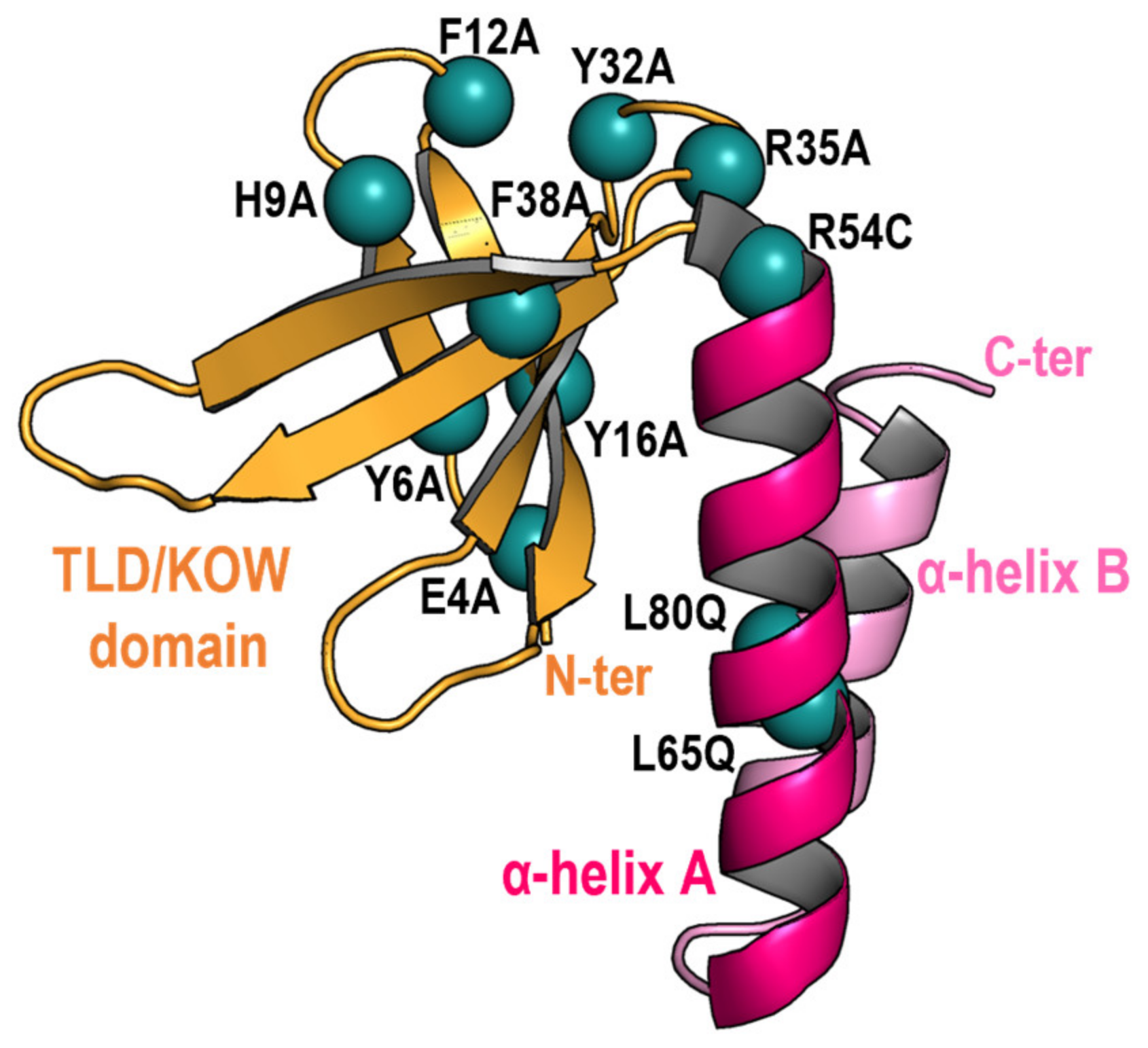
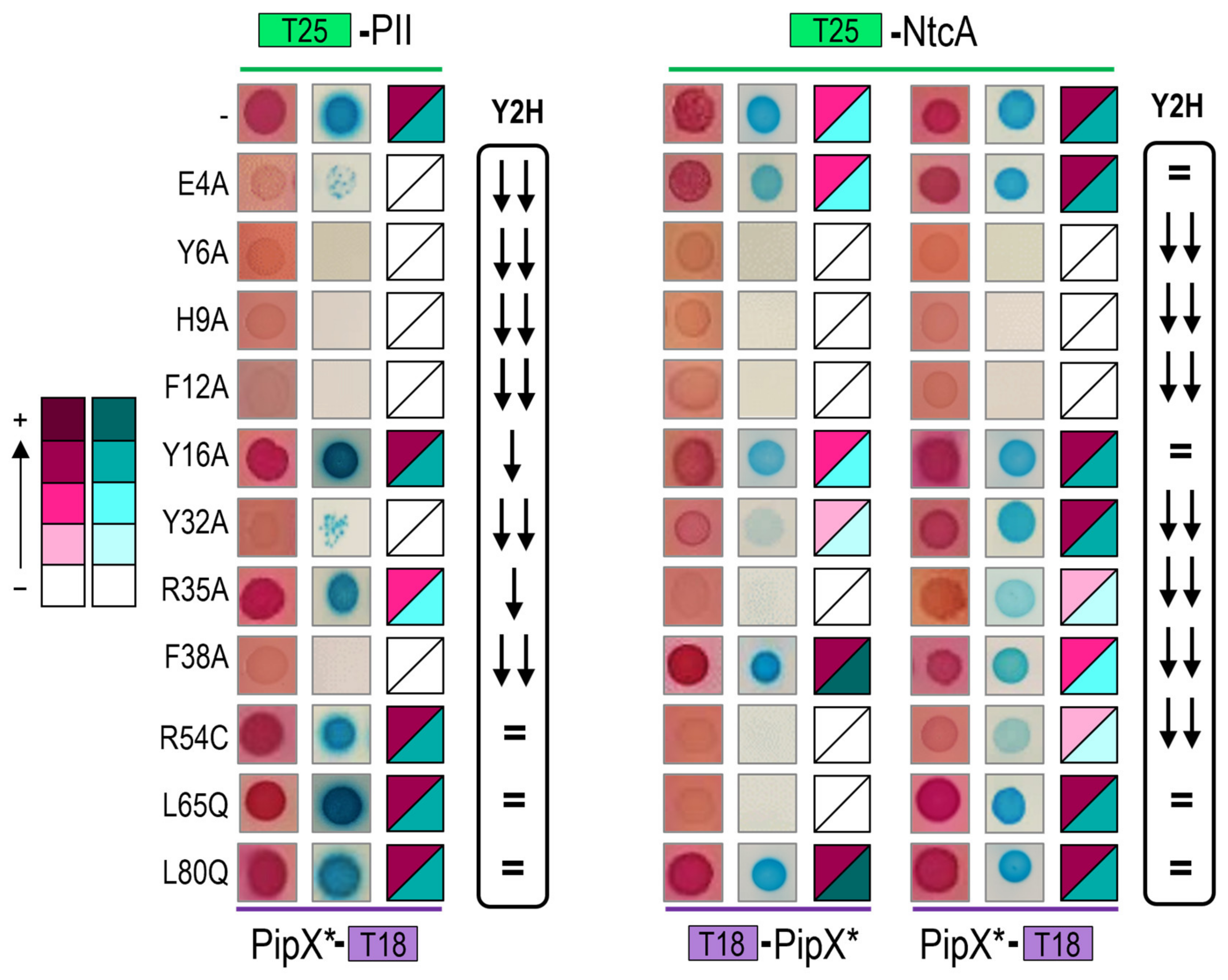
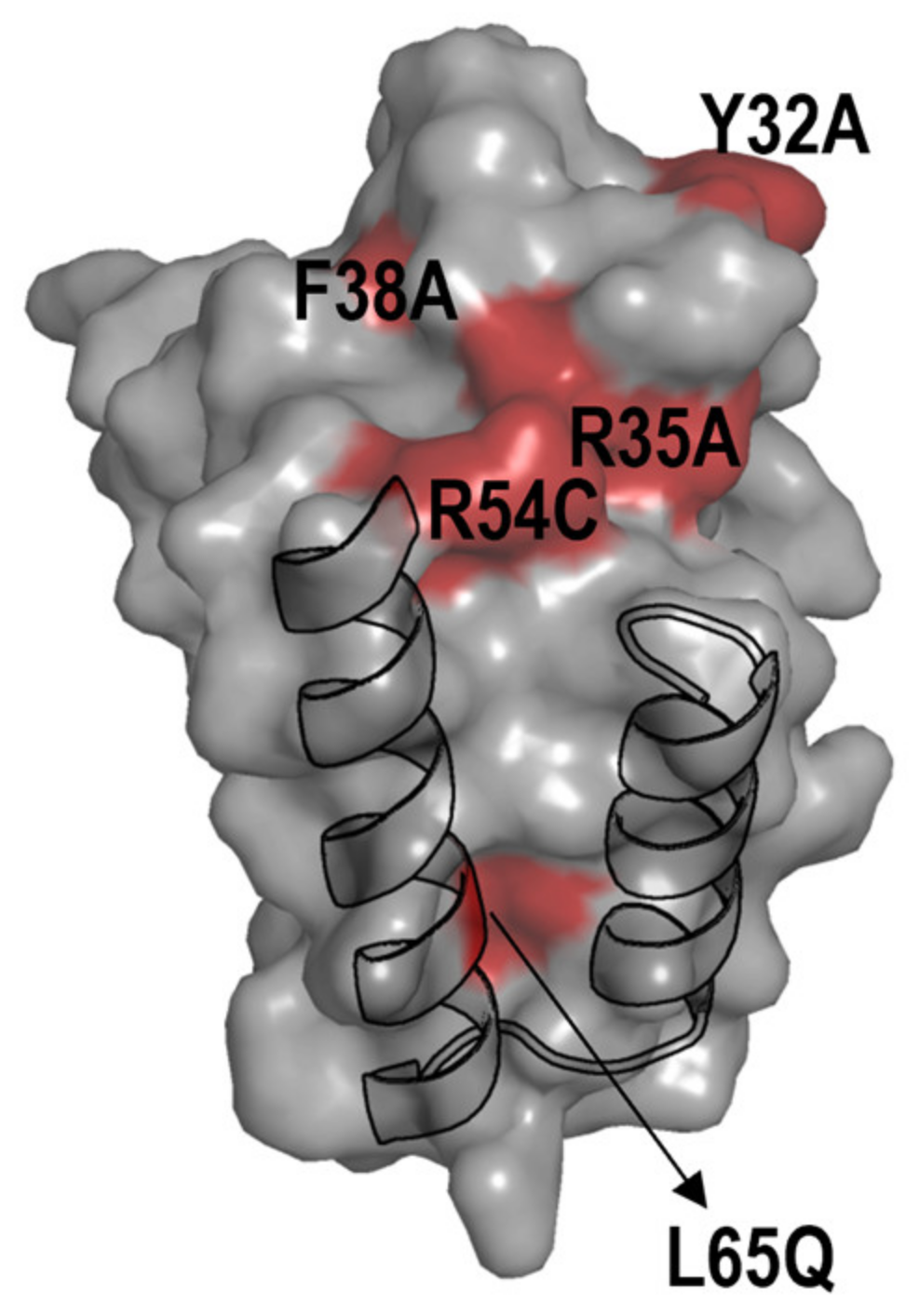


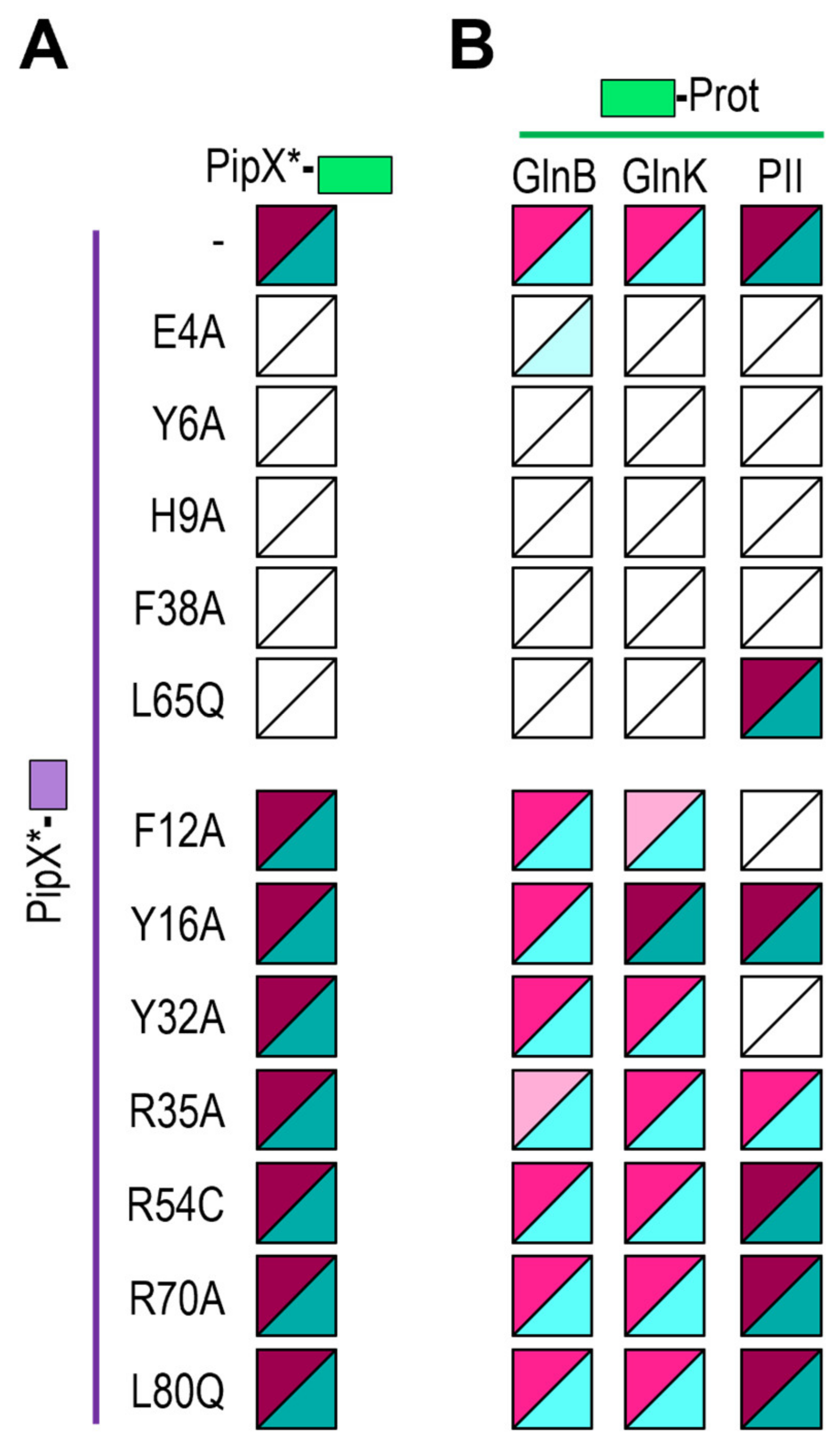
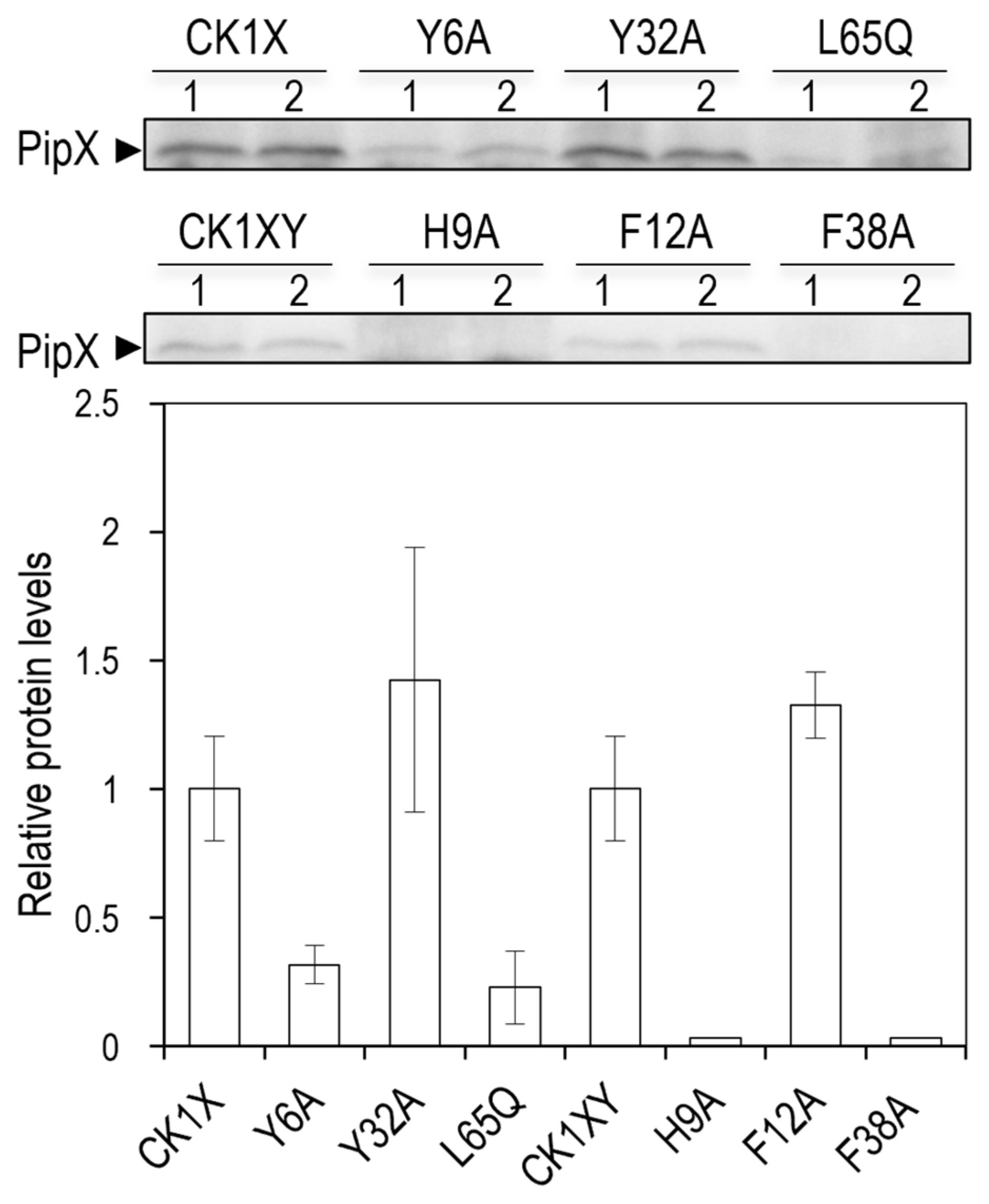
| Strain | Genotype, Relevant Characteristics | Source or Reference |
|---|---|---|
| E. coli XL1-Blue | recA1 endA1 gyrA96 thi-1 hsdR17 supE44 relA1 lac [F′ proAB lacIqZ∆M15 Tn10 (TetR)]. | [50] |
| E. coli MG1655 | F- ilvG- rfb-50 rph-1 | [51] |
| E. coli BTH101 | F- cya-99 araD139 galE15 galK16 rpsL1 hsdR2 mcrA1 mcrB1 | [52] |
| Plasmid | Description, Relevant Characteristics | Source or Reference |
| pUT18c | CyaA(225–399)T18, ApR | [52] |
| pT25 | CyaA(1-224)T25, CmR | [41] |
| pKT25 | CyaA(1–224)T25, KmR | [52] |
| pUAGC444 | T18-PipX, ApR | [21] |
| pUAGC934 | PipX-T18, ApR | [48] |
| pUAGC1047 | T25-PipX, KmR | [48] |
| pUAGC1045 | PipX-T25, KmR | [48] |
| pUAGC1048 | T25-PII, KmR | [48] |
| pUAGC441 | T25-PII, CmR | [21] |
| pUAGC1075 | T25-NtcA, KmR | [48] |
| pUAG652 | T18-GlnB, ApR | [21] |
| pUAG653 | T25-GlnB, CmR | [21] |
| pUAG663 | T25-GlnB, KmR | This work |
| pUAG660 | T18-GlnK, ApR | This work |
| pUAG661 | T25-GlnK, CmR | This work |
| pUAG665 | T25-GlnK, KmR | This work |
| pUAGC125 | pGAD424 with pipXY genomic region, ApR | [53] |
| pUAGC410 | [Φ(C.K1-pipX)], ApR KmR | [21] |
| pUAGC682 | [Φ(C.K1-pipXL65Q)], ApR KmR | [20] |
| pUAGC685 | [Φ(C.K1-pipXY6A)], ApR KmR | [23] |
| pUAGC686 | [Φ(C.K1-pipXY32A)], ApR KmR | [23] |
| pUAGC408 | [Φ(C.K1-pipXpipY)], ApR KmR | This work |
| pUAGC939 | [Φ(C.K1-pipXF12ApipY)], ApR KmR | This work |
| pUAGC940 | [Φ(C.K1-pipXF38ApipY)], ApR KmR | This work |
| pUAGC948 | [Φ(C.K1-pipXH9ApipY)], ApR KmR | This work |
Disclaimer/Publisher’s Note: The statements, opinions and data contained in all publications are solely those of the individual author(s) and contributor(s) and not of MDPI and/or the editor(s). MDPI and/or the editor(s) disclaim responsibility for any injury to people or property resulting from any ideas, methods, instructions or products referred to in the content. |
© 2024 by the authors. Licensee MDPI, Basel, Switzerland. This article is an open access article distributed under the terms and conditions of the Creative Commons Attribution (CC BY) license (https://creativecommons.org/licenses/by/4.0/).
Share and Cite
Salinas, P.; Bibak, S.; Cantos, R.; Tremiño, L.; Jerez, C.; Mata-Balaguer, T.; Contreras, A. Studies on the PII-PipX-NtcA Regulatory Axis of Cyanobacteria Provide Novel Insights into the Advantages and Limitations of Two-Hybrid Systems for Protein Interactions. Int. J. Mol. Sci. 2024, 25, 5429. https://doi.org/10.3390/ijms25105429
Salinas P, Bibak S, Cantos R, Tremiño L, Jerez C, Mata-Balaguer T, Contreras A. Studies on the PII-PipX-NtcA Regulatory Axis of Cyanobacteria Provide Novel Insights into the Advantages and Limitations of Two-Hybrid Systems for Protein Interactions. International Journal of Molecular Sciences. 2024; 25(10):5429. https://doi.org/10.3390/ijms25105429
Chicago/Turabian StyleSalinas, Paloma, Sirine Bibak, Raquel Cantos, Lorena Tremiño, Carmen Jerez, Trinidad Mata-Balaguer, and Asunción Contreras. 2024. "Studies on the PII-PipX-NtcA Regulatory Axis of Cyanobacteria Provide Novel Insights into the Advantages and Limitations of Two-Hybrid Systems for Protein Interactions" International Journal of Molecular Sciences 25, no. 10: 5429. https://doi.org/10.3390/ijms25105429
APA StyleSalinas, P., Bibak, S., Cantos, R., Tremiño, L., Jerez, C., Mata-Balaguer, T., & Contreras, A. (2024). Studies on the PII-PipX-NtcA Regulatory Axis of Cyanobacteria Provide Novel Insights into the Advantages and Limitations of Two-Hybrid Systems for Protein Interactions. International Journal of Molecular Sciences, 25(10), 5429. https://doi.org/10.3390/ijms25105429






